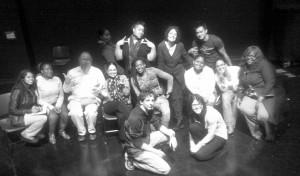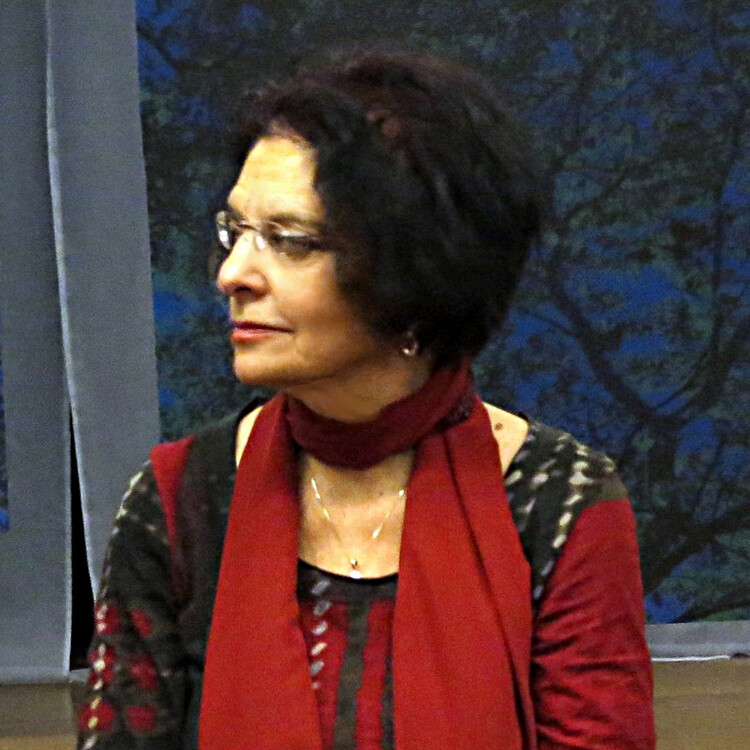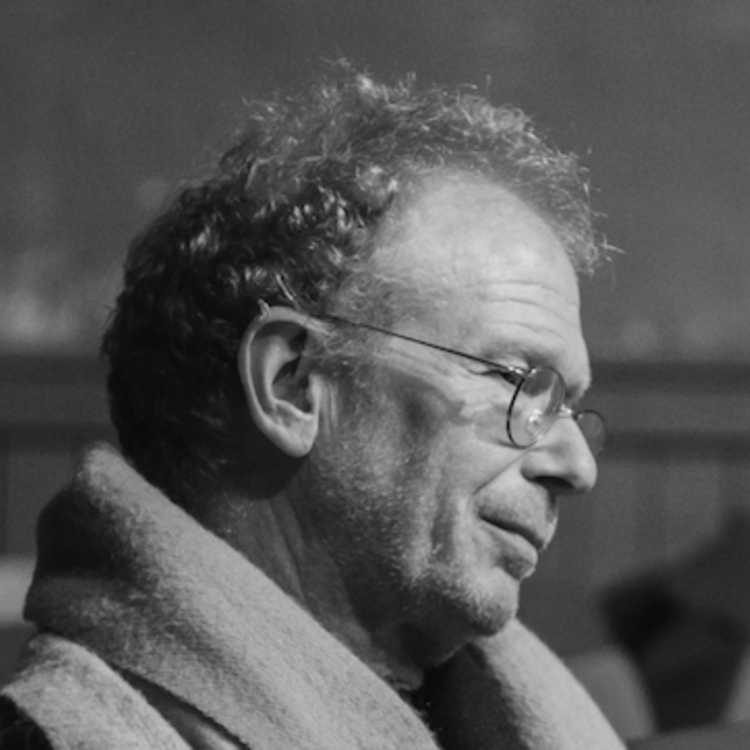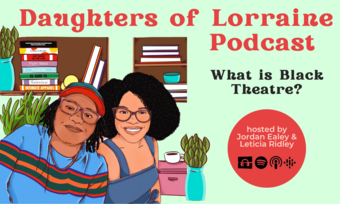Why Theater Matters to Criminal Justice Students
A Discussion between Seth Baumrin & Karen Malpede
At John Jay College of Criminal Justice there is no theatre major; most students plan public service careers in social work, forensic sciences, law enforcement, public administration, or law. Yet theatre practicums themed around issues of social justice increasingly play a dynamic role; remember that The Oresteia celebrates creation of a justice system in a democratic state and you’ll catch the drift. In a Theater and Conflict Resolution class this spring, thirteen students (many of whom were human services minors), when given the choice between a paper or a play, surprised themselves and us by writing vibrant one-acts dealing with contemporary issues from police shootings to Stop & Frisk, sexual violence, alcoholism, illegal immigration, cultural clashes. The students took turns doing multiple “developmental” readings of each other’s scripts and performed the plays for the final exam.
“What did we do right?” I asked my team-teacher, Seth Baumrin, a theatre director, Grotowski scholar, and Chair of the Communications and Theater Arts Department.

Photo courtesy of Seth Baumrin and Karen Malpede.
Seth Baumrin: We engaged them at a very stimulating level at the beginning by focusing on the theatrical, the creative. We did it slowly without being condescending to them. We insisted on truth without being bitchy and brutal about it. We introduced them to a fun dynamic, which is the oscillation between the director and the playwright. But I think there is more to it; if we did anything right it has to do with getting who they are.
We insisted on truth without being bitchy and brutal about it.
Karen Malpede : Engaging them physically at the start with the simplest sound and movement exercises allowed them to connect their bodies and their minds in a direct way. Then, they began to bring in their real problems from life and work. You said it, rightly so, the person who brings in the problem should never improvise the scene. They got to watch their concerns being improvised by others.
Seth: You are talking about the importance of the actor or the embodier. I don’t think you can do enough of that with people who are not actors. The task of taking somebody else’s truth and making it your truth is the work that we were always doing.
Karen: Remember the night J came in, before they started writing plays, and told us her family wanted her to drop out of school? We did improvisations around her conflict. Then, we lined them up across the room and asked each one to say what they want to do with their life. P said he wants to "be a good cop and a good husband." J said she wants to be a psychotherapist. Each one had "an American dream." Each had something incredibly moving they wanted to do; each had goals that will be a little bit hard to reach.
Seth: That puts me in mind of something that is almost embarrassing in its obviousness to me—in his late stage, Grotowski and the people around him were describing their work not as performances but as meetings between people. That is what we were doing every class; we were creating meetings where people were telling real truths, and they were doing improvisations.
Karen: A big “ah ha” moment for me was when we improvised M's attachment to a formerly incarcerated client. We saw that every conflict contains inner conflicts: all the people in conflict with others are also in conflict within themselves. This happened before they started writing plays, but it seems to me that that was the moment when they could begin to write plays.
Seth: That's the thing that I was really pleased with, the confidence that you had in their ability to write. There is no way that I can stress my surprise, because in general undergraduates tend to shy away from that kind of activity.
Karen: Thinking back on it, during that first half of the class when we were doing improvisations, they developed an ensemble mentality and a confidence in their own voices. When we suggested they write a play, instead of a paper, they jumped.
Seth: They are in various levels of what we call human services. Their fields require this balance between caring and maintaining order with objective distance. There is a certain kind of toughness that allows people to do that sort of helping work. They have to objectify their clients in order to help them. But that doesn’t mean they shouldn’t care about other people as human beings. So, I think they crossed that line into professional objectification, and then we brought them back to empathy. And I think they wanted to be brought back.
Karen: I love the toughness part. It gave their plays a lack of sentimentality and fierceness. Once they started to write you couldn’t stop them. The part that then terrified me was the rewriting. I thought, "now I am going to screw them up."
Seth: Yes, I was worried, too.
Karen: When I give a note, I am as precise as possible about the place in the text needing work. Then, I try to spin out one or two possible scenarios. But I say, and I really stress this: the writer will come up with a third and better solution—one that I could not have imagined.
Seth: That was a risk I was sure was going to backfire.
Karen: To me the best story is T's. The first draft of her play was about a girl who in the process of watering her mother’s plants, decides she doesn't want to go the prom because she is much happier at home with her mother and her sister. I said: "You need a scene between the mother and the daughter, not just an inner monologue. Something has to happen between them."
T's next draft was about the repeated rapes by her cousin that the mother didn’t know about and didn't want to know about. T said her mother didn't want her write to about it either, because "it was over." But she persisted in writing about it. As she rewrote, the students told her they wanted someone to help this character, but she came to an even harsher ending that was also a kind of a conflict resolution, when Mel’s best friend gathers the courage to say: "You know what bitch: the only person who pities you is your damn self…Take these two pills and knock yourself out. I’m not sticking around for this and you keep in mind if you pass out like you did last time there is no one here to drag your ass in the shower…."* To go from such a dishonest start to such a brutally honest play was wonderful.
Seth: Everyone took risks but the risks presented themselves: what’s the obvious next step here? Once they had developed that bond and the trust in the space, they found the ability to explore the forbidden topics. It’s right that they get an honest hearing because that’s what the theatre does, it explores the forbidden topics. It’s no news to you and me, but I think it bears repeating. The function of the theatre from the Greeks on is to take on the forbidden.
Karen: Another thing that thrilled me was the way they brought street language into the theatre in a poetic way. K's play is a perfect example of the wonders of Black English around those constant fights between jealous high school girls competing for the same young men, their pregnancies, miscarriages, abortions in the slums of Buffalo, and the way the story is told with humor, but also rage. Again, K made the story darker when, instead of creating an Auntie character who is a role model, we learn that Auntie steals the money she gets from child services to use on her own drugs. The speech describing unprotected sex with the boyfriend, who is later killed, is so moving because this is the only experience of love the character has ever had. "When we started having sex without a condom it fazed (sic) me at first. Then I thought of him kissing, touching and sucking all over me. I forgot about protection. He was my protection."** The language of G's play also got juicier as she dug into the conflicts between the HIV-positive guy who dumped his girlfriend and now wants her to bear his child. Without being competitive, they began to notice what the others were doing and began to bring that energy into their work.
Seth: I hope it was really telling to the students when we talked about the kind of writer Chekhov was because he was also a physician. One of my complaints about artists is that so many of us prefer to cloister ourselves in our studios and not engage, or if we do engage it is as a complainant instead of as a participant.
As we got to know the serious work they were doing personally through their plays, we also saw that we were allowing them to resolve actual internal conflicts that they have.
Karen: All their plays had personal and social dimensions: Z's episodic play about his fear of taking student loans for law school; his estranged parents' refusal to help him; his flirtation with joining the Marines. H's play about the effect of Stop and Frisk on a black young man whose mother is a police officer—and she made both points of view empathetic.
One of the things I recognized quite early that didn't reach fruition until the end was the importance of teaching the skill of listening with your whole self.
Seth: One of the things I recognized quite early that didn't reach fruition until the end was the importance of teaching the skill of listening with your whole self. First we had to find out if they could do anything with their whole selves: could they move their arm with their whole self; could they make eye contact? Halfway through, we began to work on listening exercises by tricking them to work on vocal exercises. Then we got to the point where the simple instruction “listen” carried great weight and responsibility; it was about respecting the work, themselves, one another, the audience.
Karen: It was also about listening to your characters.
Seth: This was a Pirandellian experience even he might have approved of. How informed the characters were because they were created by authors present in the room with whom the actors had real comradely relation. You and I were in that room with them and with all the characters they created.
Karen: We sat on opposite sides of the stage and talked across the empty space that was then filled. They learned that there are multiple perspectives—that we were looking for the drama.
We said to J, "this could be funny," but how do you teach someone to write a comedy? We gave her a couple of hints: have them interrupt each other, have them become more extreme.
Seth: When we did this as an exercise, it was overdone and too much, but she took the information from the exercise and made it work.
Karen: She understood the joke implicit in a mediation situation—these two characters will never stop arguing over nothing.
Seth: This is why I went to back to the Patricia Sternberg book (Theater and Conflict Resolution) because her observation that not every conflict has a resolution and that some conflicts are based on the simplest things: those two observations made it possible to start the class.
Karen: The last great moment for me was the performance, because you got them to act those plays. The lecture you gave them about how to take their eyes off the page and look at one another, and take their time, paid off. When they came to the final performance that was really only for us, but they all dressed up, they were embodying character.
Seth: I have a great faith in the opening night, no matter how humble it is. Here there was a sense of momentum. No one wanted any class to be the same as the previous class. Everyone was expecting each person to put their best foot forward. What were the dynamics that made it work? There was something about the approach that we took which may be somehow original.
Karen: We honored their voices from the beginning. What they brought was the material we worked with, and therefore they brought more and more of themselves to each class. They kept opening up, exploring their own feelings and their own experiences. They weren’t being talked at. They were expected to give. From what they brought we were making theatre games; we were giving them a container that could hold what they had. We both come from a long history of experimental theatre, European and American; we are both theatre history fanatics. We know how to make a container. And if you can pour something honest into a container it begins to be luminous.
***
* “Tainted Star” by Tiffany Chin.
** “This Story Has No Title” by Keydra Manns

















Comments
The article is just the start of the conversation—we want to know what you think about this subject, too! HowlRound is a space for knowledge-sharing, and we welcome spirited, thoughtful, and on-topic dialogue. Find our full comments policy here
Good article, but a great project! The stories we tell in theatre are about "real" people - often I think we forget that. I used to teach acting for non-theatre majors and was thrilled that they walked in looking for an easy "A" but walked out with a greater appreciation - not only for theatre in general - but in how the skills learned in class will be of great benefit to them in their lives. And since most of the people you are working with want to be in service type jobs, they will ultimately benefit others that they work with. A win-win-win situation! Kudos!
Peace
Cat from DirectorSpeak
Marvelous and inspiring. I concur, begin with the container, strengthen it, hold it steady and see what authenticity and generosity emerges from the group.